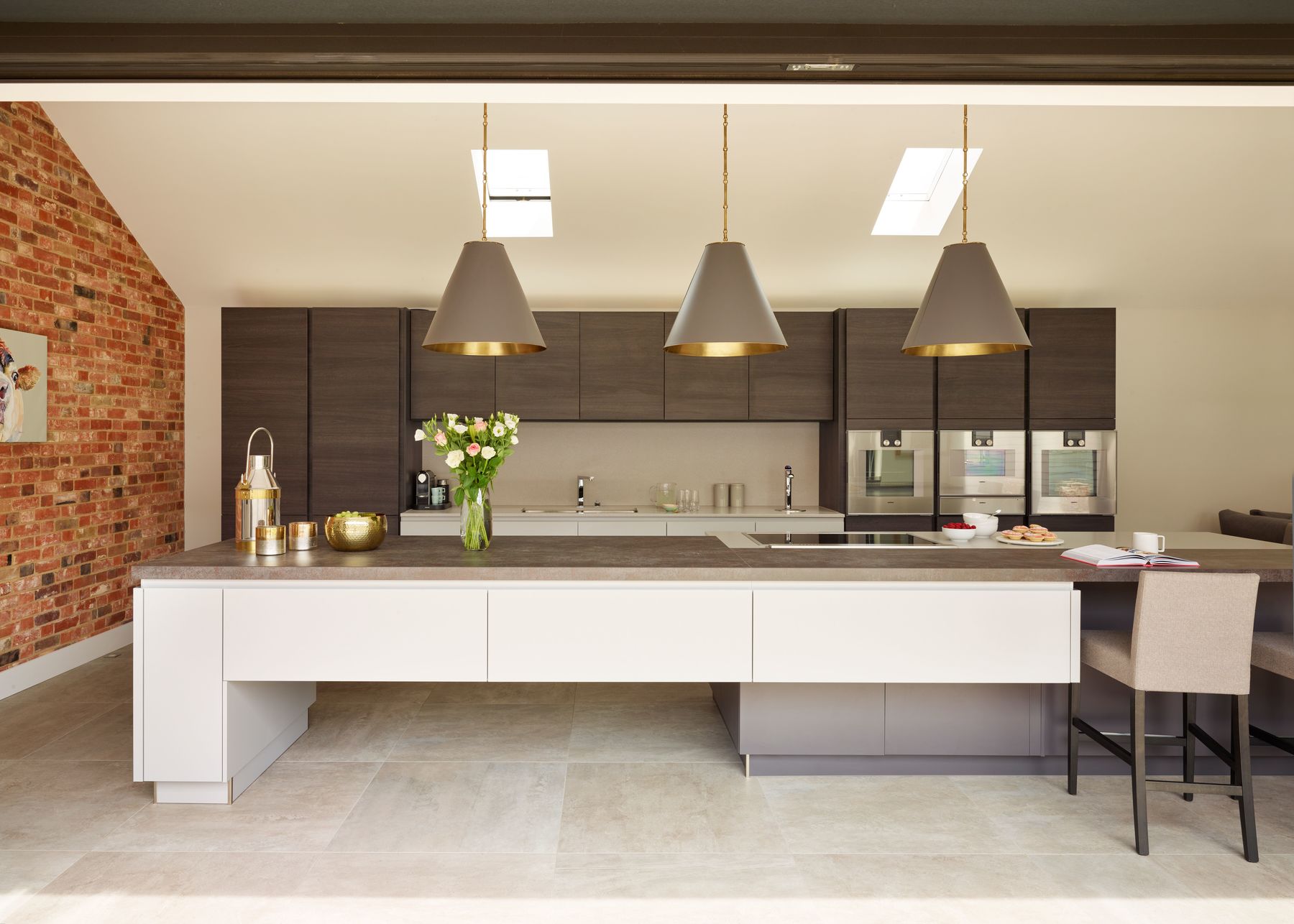
Light is the first element of kitchen design
Entrepreneur, Thomas E. Farin, is often quoted as saying: “Light is the first element of design; without it there is no colour, form, or texture.”
For most of us, when we think about lighting in our homes we think more about the fixtures than the light itself. However, as Farin says, light is one of the most important elements when it comes to designing spaces, not because of the fixtures (although they have an impact as well) but because of the light itself, as well as its interplay with surfaces, colour and space within a room. Achieving the right effect is about navigating a range of decisions around the positioning, technology, volume, adaptability and type (warm or cool) of light you use. The result is not only functional but has a profound impact on how a space feels and how you experience it.
With this in mind, lighting is clearly important in all areas of a home, but in the kitchen, the options for what, where and how are vast. In particular, where kitchens are increasingly multi-purpose spaces – convivial family environments, spaces for entertainment and functional hearts of the home – the desire to create different zones and moods makes lighting all the more useful in creating the home that you want.
The key points to think about when it comes to designing your kitchen are:
1. How does light affect the space?
2. What are the options, where do they work best and why?
3. How do you know what’s right for you?
The key to perfect lighting is in the planning
The intrinsic importance of lighting design in the kitchen, means that the earlier you can get your kitchen designer involved in the development process of your home, the better. If you’re doing a complete property renovation, having the kitchen designer involved once the architect has formed their initial structural plans, even though you won’t be ordering the cabinets until far later, will result in a far more seamless process and the best results possible.
Equally, if you’re updating the one room, then taking a holistic approach to the space and thinking about the lighting alongside the other, more obvious, aesthetic decisions, will pay dividends. It will allow the electrician to work out what is needed and where in conjunction with other lighting requirements in the space.
A journey to modern lighting
Lighting has gone on a bit of a journey over the years. In the ‘80s we had fluorescent tubing, which provided a uniform stretch to light which was not terribly attractive but was extremely functional. It was a short-lived affair, swiftly outranked by halogen lights, which were later replaced by the energy-saving variety.
Then LEDs turned up, and since then things have really stepped up a gear. They’re thin, energy-efficient and they provide ambient light as well as functional light which, thanks to technology, we have much greater control over. So, we can bend it to our varying wills.
With this latest generation of lighting, we are able to have the best of all worlds. For example, the tube light of the ‘80s has had something of a renaissance lately, but with the new and improved merits of the LED improving the type of light that it emits. Meanwhile, design has made the implementation of lighting effects seamless.
Using light to achieve your goals for your home
This intersection between technology and design is crucial because we can now control lighting and have multiple options throughout the kitchen. You may choose to have functional lighting along worktops so you can clearly see what you’re doing, but selectively place cone lighting in display cabinets. You can move lighting around, play with colour variations and control the mood and warmth depending on the time of day, the way you’re using the kitchen or even the splashback material that you choose. For example, the light will interact differently with a brass splashback to a stone or steel one. With this in mind, knowing the options as well as the brands that are available is invaluable. For example, the likes of SieMatic have multiple options to make space and light extremely versatile.
In a well-designed kitchen, you wouldn’t ever notice the sheer number of decisions and carefully made choices that have been made in order to optimise the space. However, really considering how light is placed, where it is, what you use and when, all have bearing on the overall design, and for that reason should be informed and made with intent.
To paraphrase Chanel, another design innovator; if a kitchen is poorly lit, you notice the lighting. If a kitchen is impeccably lit, you notice the kitchen.
Contact Nicholas Anthony to book your kitchen design consultation today.



